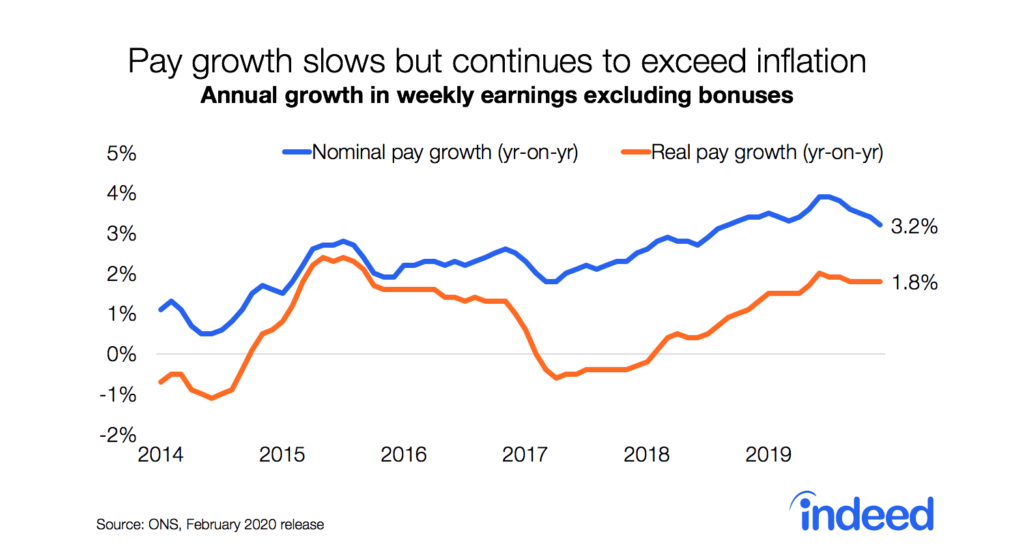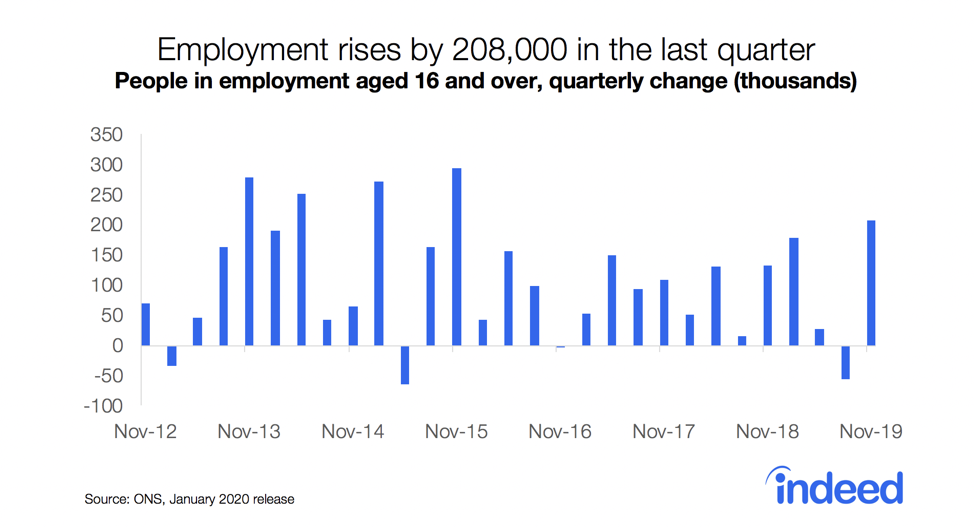For the past year or so, apprenticeships have been at the forefront of debate about the UK labour market and its training system. This surge in interest stems from the introduction of a new programme, the Apprenticeship Levy, a tax on larger employers used to fund new apprenticeships. The programme gives employers vouchers in exchange for the levy they have paid, which they can use to fund training apprenticeships. The programme is designed to encourage British employers to invest in training, although the government’s promise to create 3 million apprenticeships by 2020 may be optimistic. More recently, in the US, President Trump announced that an expansion of apprenticeship programs will be at the center of his labour policy, with the aim of providing an alternative to four-year college degrees.
This issue resonates with the British public, as shown by a recent Indeed and BritainThinks survey. It found that, among likely voters in the 2017 election, creating more apprenticeships for young people was among the top three preferred policies to make the UK a good place to work and find a job.
In the past few months, much has been written about the programme’s possible impact on different industries and its potential to prompt attempts to “relabel jobs or training that already exist.” Less has been said about the role that apprenticeship jobs play today in Britain’s labour market. We dove into data from Indeed, the Labour Force Survey and the Department for Education to better understand what kind of apprenticeship jobs are most common today, what they pay and which workers or job seekers are most interested in them. Among our findings:
- Apprenticeships increasingly are likely to be in the service sector. The two most common job titles are business administration apprentice and customer service representative.
- These work arrangements are no longer just for young workers fresh out of school. About one in five English apprentices is 35 or older.
- Workers with apprenticeship experience often do better than university graduates. In 2016, 29% of UK graduates earned less than what the average nongraduate with an apprenticeship took in.
Apprenticeship jobs in 2017
An apprenticeship is defined as any full-time job with an accompanying skills development programme that includes both on-the-job and off-the-job training. With the number of apprenticeships likely to rise as a result of recent policy changes, these work arrangements look set to take on a bigger role in the British labour market.
The word apprentice may conjure images of young blue-collar workers learning a skilled manual trade while wielding a wrench or trowel, but this may not be a realistic representation of modern apprenticeship. Today’s British apprentices are more likely to be in management suites, restaurants and healthcare facilities than in construction sites or factories.
What explains the changing face of apprenticeship? Most jobs in the UK today are in the service sector and so too are most apprenticeships. When we look at postings on Indeed, we find that occupations that employ large chunks of the labour force, such as management positions, office and administrative support, personal care, food preparation and serving, and computer and mathematical jobs are the ones with the most apprenticeship positions.
The picture is different when we look at occupations with the highest concentration of apprenticeships, that is, occupations that are most likely to employ apprentices. A more traditional apprenticeship occupation—Installation, Maintenance and Repair—is on top, while service jobs in personal care, hospitality and healthcare follow.
The skew towards service sector apprentice jobs is clear when we look at the most common job titles associated with apprenticeship job postings. Jobs in business, administration, customer and personal services again dominate the list.
The modern apprentice is not always young and fresh out of school
Modern apprenticeship may defy the traditional stereotype in another way: Today’s apprentices are no longer just youngsters out of school. Apprentices age 24 or younger are still the biggest group, but, in 2016 and 2017, one in five English apprenticeship starters was 35 or above, according to the Department for Education.
The attractiveness of apprenticeships to older workers is also evident on Indeed, where about 1 in 10 clicks for UK apprenticeship job postings in 2017 have come from job seekers between the ages of 37 and 71.
The average former apprentice does better than some graduates
In 2016, 29% of UK graduates earned less than what the average nongraduate with an apprenticeship took in, according to the Labour Force Survey. That is up from 25% in 2005, highlighting the fact that the average former apprentice earns more than workers at the bottom of the wage distribution. If the cost of a degree is factored in, it is clear that, for some workers, an apprenticeship brings a significantly higher return on investment than university.
Apprenticeships: from myth to reality
Apprenticeships today are changing in ways that parallel the transformation of the broader British labour market. Increasingly, apprentices are likely to be in the service sector and they may be older workers long out of school. What is more, recent policy changes are likely to expand the role of apprenticeship in the UK. Images of young apprentices at construction sites or the factory floor still dominate our collective memory. But the data are clear. Today’s British apprentices are more likely to wear a jacket and tie or a chef’s uniform than dungarees.






